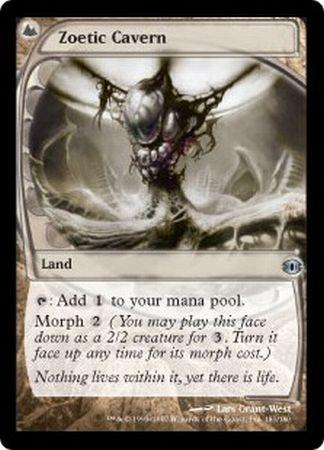6. Caverns of the Ancients

6. Caverns of the Ancients

|
|
|
|
|
|
|
|
|
|
|
|
Geography: This relatively
small series of caves shows considerable
evidence of excavation and
decoration. The AREA consists
of a single entry tunnel,
smoothed and widened to a uniform
width of 30 feet and ceiling
of 10 feet. This corridor leads to a
huge, domed chamber nearly
1/2 mile in diameter. Massive stone
columns support the ceiling.
In the exact center of the chamber is
an elaborate temple carved
with bestial shapes.
The temple is surrounded
by concentric rings of two- and
three-story stone buildings
separated by wide, smooth avenues.
In the cavern wall, a ring
of crude stone barracks provide the only
simple quarters in this
ancient city.
At the end opposite the entrance
tunnel stands a tall palace,
surrounded by elegantly
thin columns. Huge brass doors
stand
shut-the only closed doorways
in the city. Hundreds of rooms
branch out to either side
of the main entrance, and the facade
towers fully 100 feet high
and stretches for 300 feet to either side.
At 60-degree intervals about
the circular walls of the cavern,
five additional tunnels
branch out to smaller caverns. These are
now uniformly dusty and
empty, although they once served as
farmland for the residents
of the city.
Denizens: The original
builders of this city were the duergar.
Shifts in the water table
centuries ago caused their wells to dry
up, and the race was forced
to migrate deeper under the ground.
Now, not a single creature
or plant lives in the AREA. There are
nonetheless denizens here-unliving
denizens.
An honor guard of undead
stands at attention around the massive
hall of the palace. Hundreds
of zombies, skeletons, and
mummified leaders stand
arrayed to lead the host to battle. If the
doors to the palace are
opened, the orders to attack are given.
The undead pursue a foe
only to the juncture of the tunnel from
Area 6 with that to Area
7.
Resources: No
fresh air has entered this region for centuries.
The AREA is completely dry--there
is not so much as a cup of
water here. The air is stale
and smells faintly of decay. It is of very
poor quality, and characters
exerting themselves have to stop,
gasping, after 2d6 rounds.
Recovery takes 1d6 rounds.
Virtually all items of value
were stripped from the city by the
duergar upon their emigration.
Stone furniture is common in
most of the buildings, and
few wooden items (shelves, chairs,
etc.) have survived. The
wood is fragile and quickly crumbles
under pressure.
The side caverns were once
used to raise edible fungus, and to
corral cave-pigs and other
livestock.
Now, a thick layer of dust
covers dry soil in each
of them.
Unique Features: A
secret trapdoor in the floor of the great
palace hall leads to a large
smithy. Great furnaces, long since
extinguished, line the walls,
and a massive black anvil
occupies
the center of the shop.
The anvil radiates strong magic. It is the
forge of power of the duergar.
It weighs 25,000 gp. Any weapons
or armor hammered into shape
upon this anvil gain an enchantment
bonus of + 1. This cannot
be used to improve an existing
weapon, however. When combined
with the hammer of substance <>
wielded by a dwarven or
duergar <weapon>smith, weapons of +2 or
even +3 enchantment can
be created.